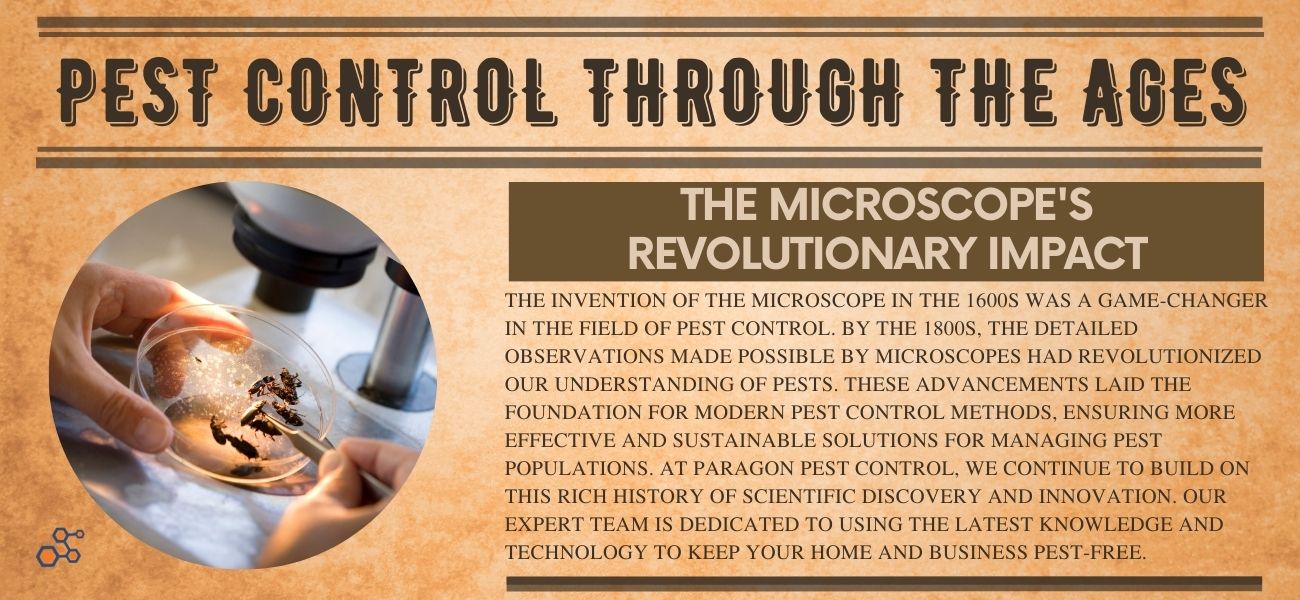Pest Control Through the Ages: How the Microscope Revolutionized Our Understanding of Pests
Welcome to our "Pest Control Through the Ages" series! Today, we're diving into the fascinating history of how the invention of the microscope in the 1600s significantly advanced our understanding of pests and their biology by the 1800s. This pivotal advancement revolutionized the field of pest control, leading to more effective and targeted methods of managing pests.
The Invention of the Microscope
The invention of the microscope in the late 16th and early 17th centuries marked a monumental leap in scientific discovery. Early pioneers like Antonie van Leeuwenhoek and Robert Hooke used microscopes to observe and document the intricate details of tiny organisms, including pests. These observations were crucial in laying the groundwork for future scientific research.
Antonie van Leeuwenhoek's Contributions
Antonie van Leeuwenhoek, often referred to as the "Father of Microbiology," made significant contributions by developing powerful microscopes and using them to observe microscopic life forms. In the 1670s, van Leeuwenhoek was the first to document bacteria, protozoa, and other microorganisms, providing a new perspective on the biological world.
Robert Hooke's Observations
Robert Hooke's publication, "Micrographia" (1665), was another milestone in the history of microscopy. Hooke's detailed drawings and descriptions of various organisms, including insects, mites, and fungi, provided valuable insights into the structure and function of these tiny creatures.
Advancements in Pest Control
The ability to observe pests at a microscopic level led to significant advancements in understanding their biology, behavior, and life cycles. By the 1800s, this knowledge had paved the way for more effective pest control strategies.
Understanding Pest Biology
Microscopic observations revealed crucial details about pest anatomy and physiology. Scientists could now study the internal structures of pests, such as their digestive and reproductive systems, leading to a deeper understanding of how pests function and thrive.
Disease Transmission
One of the most important discoveries was the role of pests in disease transmission. For example, the identification of bacteria and viruses carried by pests like mosquitoes and fleas helped explain how diseases such as malaria and plague spread. This knowledge was vital in developing strategies to control pest populations and prevent disease outbreaks.
Targeted Pest Control Methods
With a better understanding of pest biology and behavior, scientists and pest control professionals could develop more targeted and effective methods. This included the use of biological controls, chemical pesticides, and integrated pest management practices that combined multiple approaches to manage pest populations sustainably.
Conclusion
The invention of the microscope in the 1600s was a game-changer in the field of pest control. By the 1800s, the detailed observations made possible by microscopes had revolutionized our understanding of pests and their biology. These advancements laid the foundation for modern pest control methods, ensuring more effective and sustainable solutions for managing pest populations.
At Paragon Pest Control, we continue to build on this rich history of scientific discovery and innovation. Our expert team is dedicated to using the latest knowledge and technology to keep your home and business pest-free.
For professional pest control services, contact Paragon Pest Control today. We proudly serve Dallas, Fort Worth, Arlington, Plano, Irving, Garland, Frisco, McKinney, Carrollton, Richardson, Lewisville, Mansfield, Weatherford, Aledo, Benbrook, and more. Call us at (972) 435-9797 or visit paragonpestdfw.com to schedule your pest control service and protect your home from pests.


